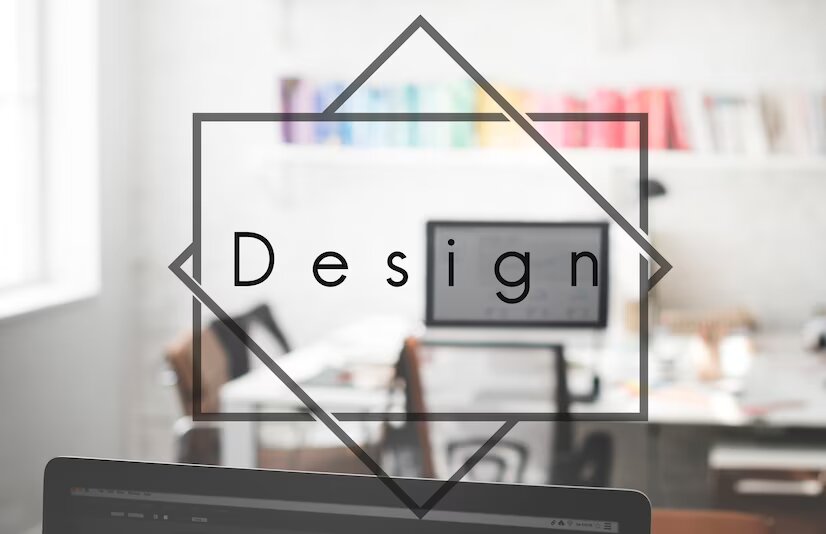7 Reasons Your PPC Campaign Isn’t Converting (And How to Fix It)
Pijus Maity, 3 days ago

Logos are ubiquitous in our modern world. From global corporations to local businesses, logos visually represent a brand’s identity and serve as a critical tool in communicating with customers. But have you ever wondered why some logos stick in our minds while others are forgettable? The answer lies in the psychology behind the logo design.
Logos are not just arbitrary symbols or pretty pictures. They are carefully crafted to evoke specific emotions, convey meaning, and create a connection with the audience. Understanding the psychology behind logo design, even when using an AI logo generator, can help businesses develop logos that resonate with their audience and leave a lasting impression.
Here are some key psychological factors to consider when designing a logo:

The importance of simplicity cannot be emphasized enough in logo design. Logos that are simple, clean, and easy to understand are more likely to be remembered and recognized. Our brains are naturally wired to quickly process simple shapes and patterns, making them more memorable.
On the flip side, intricate logos can be perplexing and challenging to comprehend, resulting in confusion and forgetfulness among the audience. Therefore, it is imperative to prioritize a simple logo design to leave a lasting impression.
Colors possess considerable psychological influence, capable of evoking emotions and influencing perceptions. However, it is crucial to consider cultural factors when choosing colors for your logo, as different cultures may perceive colors differently. The careful choice of colors in a logo, taking into account both the psychological associations and cultural implications, can profoundly impact how it is perceived and interpreted.
For instance, red is often associated with energy, passion, and excitement, while blue is associated with trust, stability, and reliability. Yellow is associated with optimism and happiness, while green is associated with nature and sustainability. In some cultures, however, these color associations may vary.
Being mindful of the psychology of colors, as well as the cultural context of your target audience, and using them strategically in your logo can help convey the desired message and resonate with your audience.
Since the dawn of human civilization, symbols have been employed to communicate meaning. In logo design, incorporating symbols or icons can be compelling to convey a message or embody a brand’s values. Symbols can evoke emotions, establish associations, and convey intricate concepts.
For example, the Nike swoosh is a simple yet powerful symbol representing movement, speed, and athleticism. The Apple logo is a bitten apple, symbolizing knowledge, discovery, and innovation. When using symbols in your logo, choosing symbols that are meaningful to your audience and align with your brand’s identity is essential.

Just like humans, brands have personalities. Brand personality refers to the human characteristics and traits associated with a brand. Is your brand playful or serious? Is it sophisticated or down-to-earth? Is it modern or traditional? Your logo should reflect your brand’s personality and resonate with your target audience.
Consider thinking about a children’s toy brand that may use bright colors, playful fonts, and fun symbols in its logo. In contrast, a luxury fashion brand may use elegant fonts, muted colors, and sophisticated symbols. Understanding and incorporating your brand’s personality into your logo can create a sense of connection and relatability with your audience.
The most vital factor in logo design is your target audience. Your logo should deeply connect with your intended audience, resonating with their emotions, preferences, and values. Gaining insights into your audience’s demographics, interests, and motivations can guide you in creating a logo that effectively communicates with them.
If your intended audience is youthful and fashion-forward, your logo should exude modernity, edginess, and visual appeal. Your logo should embody classic elegance, refinement, and timelessness for a conservative and traditional audience. Understanding your audience and designing a logo that resonates with their preferences can forge a deep emotional connection and cultivate brand loyalty.
The way in which the human brain processes visual information, known as cognitive processing, is a fundamental consideration in logo design. Understanding this process can enable the creation of a visually appealing, easily comprehensible, and memorable logo that resonates with the audience.
The concept of visual hierarchy in cognitive processing entails organizing visual elements to direct the viewer’s attention and perception. By increasing their size, boldness, or prominence, designers can use visual hierarchy to emphasize critical elements in the logo, such as the brand name or a significant symbol. This aids the audience in swiftly grasping and remembering the brand’s key message or identity.
Another essential principle is the Gestalt principle, which describes how humans naturally perceive and group visual elements based on proximity, similarity, closure, and continuity. Designers can use these principles to create visual harmony and coherence in logo design. For example, using proximity to group related elements together or applying a closure to create a complete shape can make the logo more visually appealing and easier to understand.
Cognitive load theory is another important concept in cognitive processing that can contribute to logo design. It suggests that the brain has limited cognitive resources and can only process a certain amount of information simultaneously. Therefore, keeping the logo design simple and avoiding visual clutter can reduce cognitive load and make it easier for the audience to process and remember the logo.
Understanding the cognitive processing principles can also help in designing memorable logos. It has shown that people remember simple, distinct, and unique visual elements better than complex or common ones. Incorporating distinctive and memorable visual aspects in the logo, such as a unique shape, creative use of negative space, or an original combination of colors, can enhance the logo’s memorability and recognition.
Additionally, considering the context in which the logo will be used is vital in cognitive processing. For example, suppose the logo will be used across different platforms and sizes, such as on a website, social media, or a physical product. In that case, it’s essential to design a scalable logo adaptable to different sizes and formats while maintaining its visual clarity and impact.
Logo design is not just about aesthetics but also the psychology behind it. A well-designed logo goes beyond visually appealing; it should evoke emotions, convey meaning, and resonate with the audience.
Considering factors such as simplicity, color, symbolism, brand personality, and target audience can significantly influence the effectiveness of a logo in creating a lasting impression. By leveraging these design concepts effectively, a logo can become a powerful tool in establishing a memorable brand identity and leaving a lasting impression on the audience’s mind.
Read Also:
Abdul Aziz Mondol is a professional blogger who is having a colossal interest in writing blogs and other jones of calligraphies. In terms of his professional commitments, he loves to share content related to business, finance, technology, and the gaming niche.

Nabamita Sinha, 5 days ago